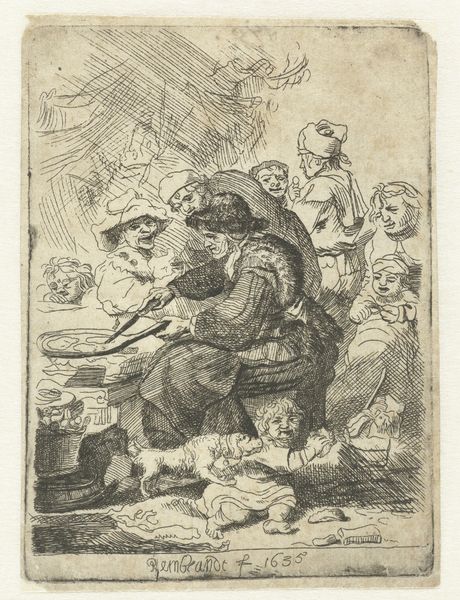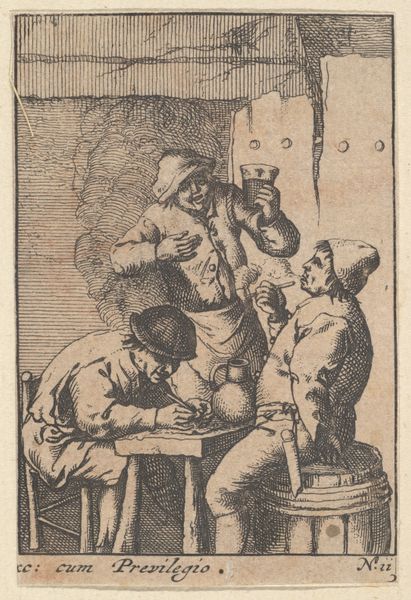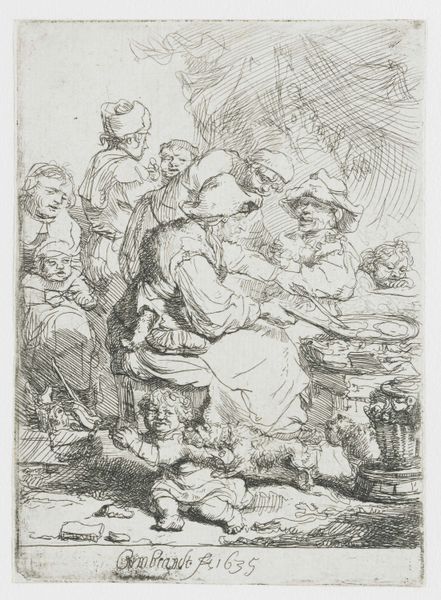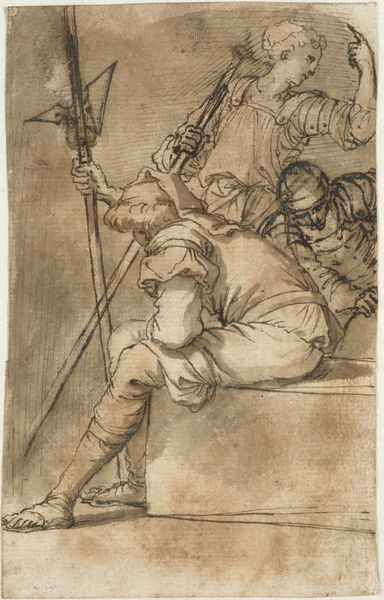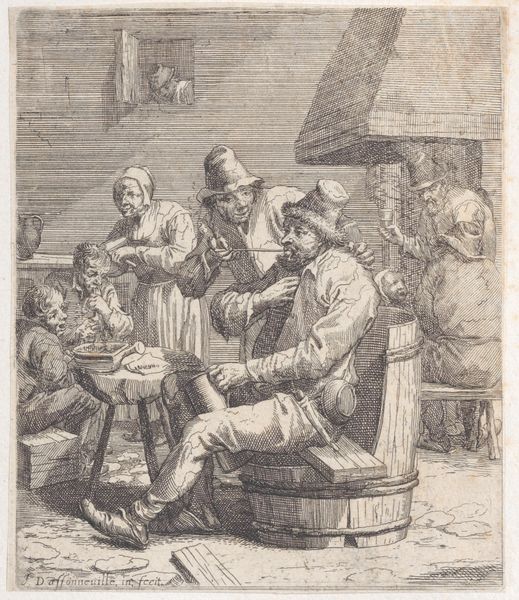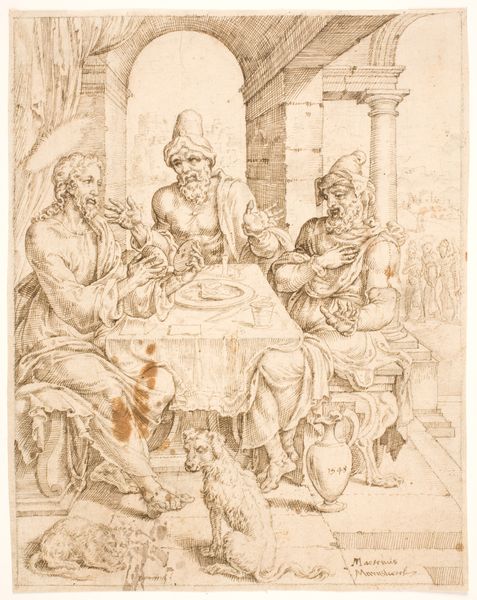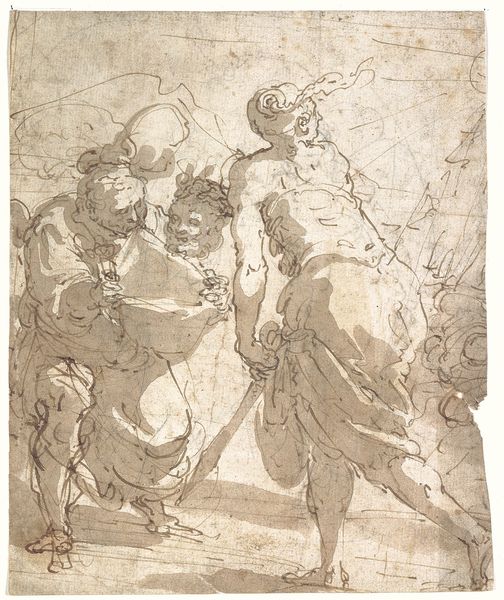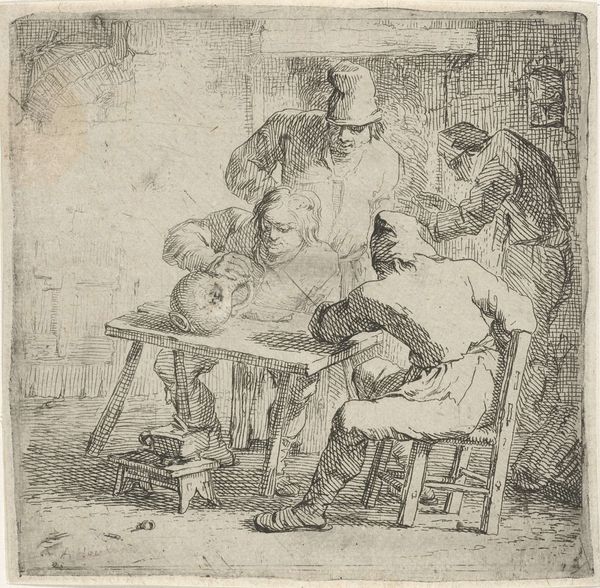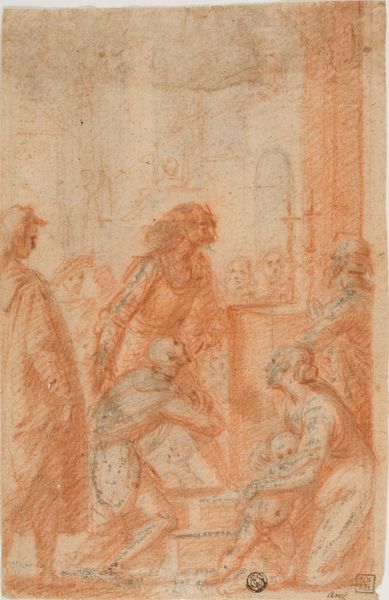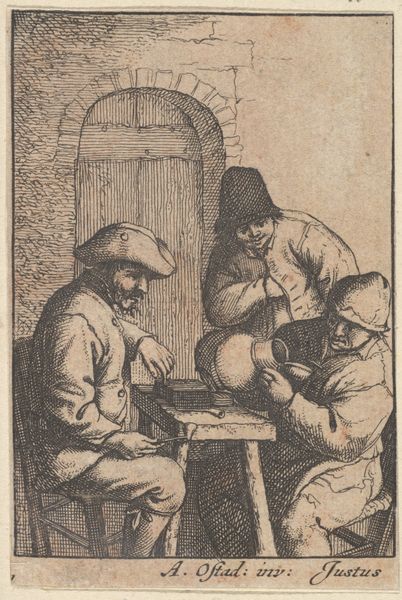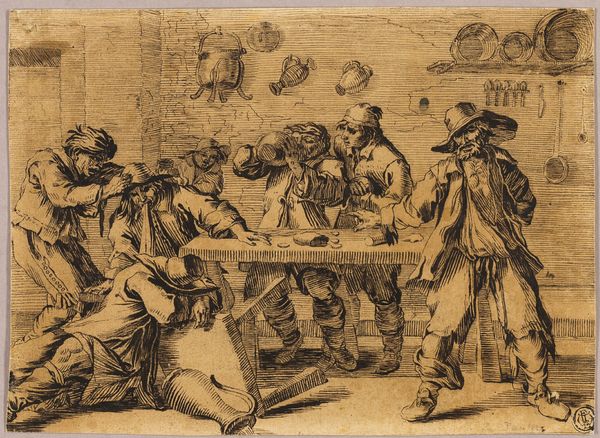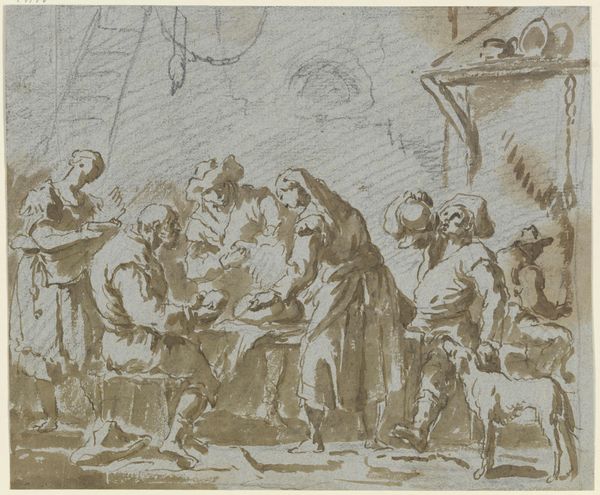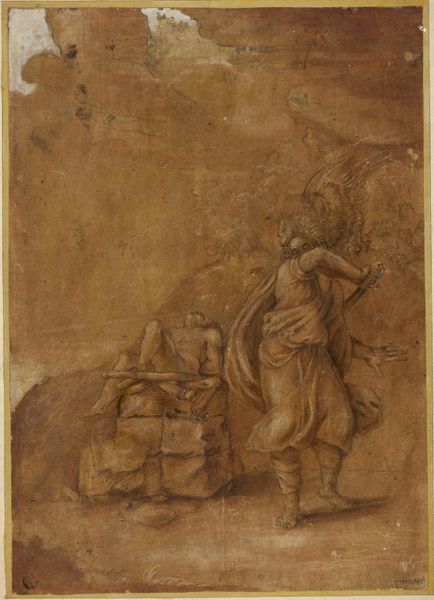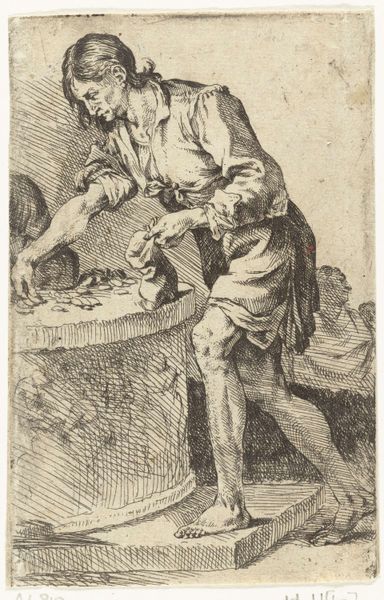
drawing, print, paper, pencil, chalk, graphite, charcoal
#
portrait
#
drawing
# print
#
charcoal drawing
#
paper
#
charcoal art
#
oil painting
#
coloured pencil
#
group-portraits
#
pencil
#
chalk
#
graphite
#
genre-painting
#
charcoal
#
northern-renaissance
#
charcoal
Dimensions: 201 × 165 mm
Copyright: Public Domain
Curator: Before us we have Adriaen Brouwer's "Four Peasants at Table." It's undated, but here at the Art Institute of Chicago we can appreciate this intriguing work. Editor: It strikes me immediately as deeply textural; I can practically feel the rough-hewn table and the coarse fabrics through the charcoal and chalk rendering. There is something very sobering in the subdued palette. Curator: Brouwer’s works often engaged with genre painting, depicting everyday life, and frequently of the lower classes. How do you interpret these peasants' placement, expressions, what they are possibly doing and where this draws us regarding how art reflects culture? Editor: They're huddled together, seemingly sharing a meal or perhaps playing a game of chance. The materiality of the scene – the rough table, the simple bowls – speaks volumes about their economic status. The production of such an artwork implies a consumer interested in such class dynamics. It feels like there’s a critical perspective being offered on their labor. Curator: I wonder, could this be more than just documentation? Brouwer, through the portrayal of these peasants, seems to almost highlight themes of poverty, marginalization, perhaps even hinting at their socio-political disenfranchisement. How would such pieces been perceived? Editor: Perhaps the consumption and collection of works like these served a purpose: To offer a contrasting reality for wealthier patrons. The materials themselves underscore this divide, with the use of inexpensive chalk and charcoal. The raw nature of the sketch highlights process. Curator: This also touches on Brouwer's positionality as an artist: what were his politics, to whom was he trying to appeal? There's something about their weary expressions that cuts across time. Editor: Yes. But through his choice of humble materials and everyday subjects, we're forced to confront the conditions of labor and production, both in the artwork's creation and within the world it depicts. A sober reflection, indeed. Curator: Seeing their figures brought to life via these muted hues allows us to reconsider how labor intersects with visibility and representation in the northern renaissance. Editor: It brings up a different way of valuing artistic merit—not just in skill, but in how it portrays a social dynamic. The humble materials become a lens.
Comments
No comments
Be the first to comment and join the conversation on the ultimate creative platform.
